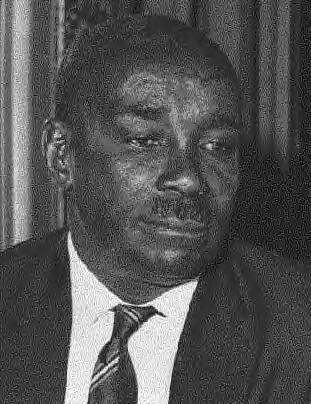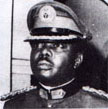Lole Gwakisa
JF-Expert Member
- Nov 5, 2008
- 4,728
- 2,259
Zanzibar First President Amani Abeid Karume, who came to power after the triumph of the revolution in January of 1964. They immediately united with maninland Tanganyikia to form the United Republic of Tanzania.
<SCRIPT type=text/javascript> F.decorate(_ge('button_bar'), F._photo_button_bar).bar_go_go_go(2190284421, 0);</SCRIPT><FORM id=notes_text_form><INPUT type=hidden value=b385708458b0ea2e9f08bd0ee994f696 name=magic_cookie>
</FORM>
<FORM id=notes_text_buttons_form><INPUT class=Butt onclick="_ge('photo_notes').save_editing(); this.blur();" type=button value=Save><INPUT class=CancelButt onclick="_ge('photo_notes').cancel_editing(); this.blur();" type=button value=Cancel><INPUT class=DeleteButt id=delete_note_button onclick="_ge('photo_notes').delete_note(); this.blur();" type=button value=Delete!></FORM>
<SCRIPT type=text/javascript> var page_note_ratio = 1;</SCRIPT>
<TABLE id=comm_table style="PADDING-RIGHT: 3px; PADDING-LEFT: 3px; BACKGROUND: rgb(255,255,255); PADDING-BOTTOM: 3px; WIDTH: 200px; PADDING-TOP: 3px; -moz-background-clip: border; -moz-background-origin: padding; -moz-background-inline-policy: continuous; -moz-border-radius-topleft: 3px; -moz-border-radius-topright: 3px; -moz-border-radius-bottomright: 3px; -moz-border-radius-bottomleft: 3px" cellSpacing=0 cellPadding=0 border=0><TBODY><TR><TD class=td_white>
</TD><TD class=td_white style="PADDING-RIGHT: 0px; PADDING-LEFT: 0px; PADDING-BOTTOM: 0px; PADDING-TOP: 3px" vAlign=top width=1>
</TD><TD class=td_white id=comm_td style="PADDING-RIGHT: 3px; PADDING-LEFT: 3px; FONT-SIZE: 12px; PADDING-BOTTOM: 3px; PADDING-TOP: 3px">
</TD><TD class=td_white>
</TD></TR><TR id=comm_button_tr><TD class=td_white>
</TD><TD class=td_white>
</TD><TD class=td_white style="PADDING-RIGHT: 3px; PADDING-LEFT: 3px; PADDING-BOTTOM: 3px; PADDING-TOP: 3px">
</TD><TD class=td_white>
</TD></TR></TBODY></TABLE>
<TABLE class=shadow_table style="PADDING-RIGHT: 0px; PADDING-LEFT: 0px; PADDING-BOTTOM: 0px; PADDING-TOP: 0px" cellSpacing=0 cellPadding=0 border=0><TBODY><TR><TD width=11></TD><TD id=shadow_width_controller> </TD><TD width=11>
</TD><TD width=11> </TD></TR><TR><TD id=shadow_height_controller height=30>
</TD></TR><TR><TD id=shadow_height_controller height=30> </TD><TD>
</TD><TD>
</TD><TD></TD></TR><TR><TD> </TD><TD>
</TD><TD> </TD><TD>
</TD><TD> </TD></TR></TBODY></TABLE>
</TD></TR></TBODY></TABLE> <SCRIPT type=text/javascript> Y.E.onDOMReady(show_notes_initially);</SCRIPT>
<SCRIPT type=text/javascript> Y.E.onDOMReady(show_notes_initially);</SCRIPT>
<SCRIPT type=text/javascript> F.decorate(_ge('photo_notes'), F._photo_notes).notes_go_go_go(2190284421, 'http://farm3.static.flickr.com/2313/2190284421_4c9ae7efe7_t.jpg', '3.1444');</SCRIPT><FORM id=fave_form style="VISIBILITY: hidden" method=post><INPUT type=hidden value=b385708458b0ea2e9f08bd0ee994f696 name=magic_cookie><INPUT type=hidden value=0 name=faveadd><INPUT type=hidden value=0 name=faveremove></FORM>
<!-- PHOTO CONTENT: DESCRIPTION, NOTES, COMMENTS -->....to be continued...
Respect.
FMEs!
Nasikia Muheshimiwa huyu akaamua kuwasindikiza watoto wake kwenda shule Malawi siku ya Mapinduzi ya Zanzibar.
Kabla majogoo hayajawika akawakusanya wanawe na kupanda ngalawa kuelekeaa Bagamoyo, huku nyuma mapanga shaa shaa na mitutu ikirindima.
Mapinduzi daima!............






